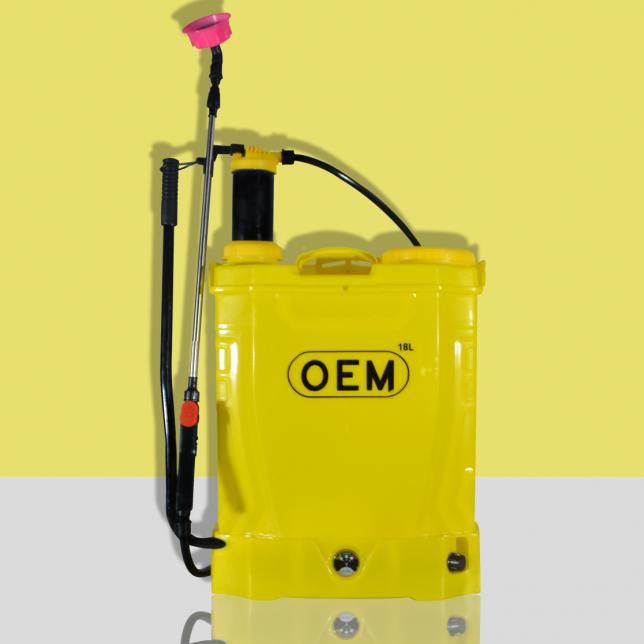Disinfectant Sprayers: An Essential Tool for a Safer World
In recent times, the world has witnessed the significance of maintaining hygiene and sanitation like never before. The outbreak of various infectious diseases, including the infamous COVID-19 pandemic, has emphasized the importance of disinfection practices. With this heightened awareness, the demand for effective disinfectant sprayers has surged. These versatile devices have become an indispensable tool in the fight against harmful pathogens, ensuring safer environments in homes, workplaces, hospitals, and public spaces. In this blog, we will explore the various types of disinfectant sprayers, their applications, benefits, and the pivotal role they play in safeguarding human health.
- Understanding Disinfectant Sprayers
Disinfectant sprayers are innovative devices designed to distribute disinfectant solutions efficiently and evenly onto surfaces. They use various technologies such as electric, battery-powered, or manual pump systems to convert liquid disinfectants into fine droplets or mist, providing comprehensive coverage and maximizing effectiveness. These sprayers come in a wide range of sizes, from handheld units for personal use to large-scale industrial sprayers for sanitizing expansive areas.
- Types of Disinfectant Sprayers
a. Handheld Disinfectant Sprayers: Handheld sprayers are lightweight and portable, making them ideal for individual use in homes, offices, and small-scale disinfection tasks. They are easy to operate and enable users to target specific areas, surfaces, or objects that require disinfection.
b. Backpack Disinfectant Sprayers: Backpack sprayers are equipped with adjustable straps, allowing users to carry the unit on their back while disinfecting larger spaces. They are commonly used by professional cleaners for disinfecting schools, offices, hotels, and public venues.
c. Electrostatic Disinfectant Sprayers: Electrostatic sprayers positively charge the disinfectant droplets, creating an electrostatic field that attracts them to surfaces, ensuring comprehensive coverage and minimizing wastage. These sprayers are increasingly popular due to their efficiency and ability to reach challenging areas.
d. Fogging Disinfectant Sprayers: Fogging sprayers produce a fine mist of disinfectant that can cover large areas quickly. They are widely used in public transportation, airports, and other high-traffic locations where rapid disinfection is essential.
- Applications of Disinfectant Sprayers
a. Public Spaces: Disinfectant sprayers play a crucial role in ensuring the safety of public spaces, such as airports, train stations, shopping malls, and stadiums. By regularly disinfecting high-touch surfaces like handrails, doorknobs, and seating areas, they help reduce the risk of cross-contamination.
b. Healthcare Facilities: In hospitals and clinics, where infection prevention is of paramount importance, disinfectant sprayers are instrumental in maintaining a sterile environment. They aid in disinfecting medical equipment, patient rooms, and high-traffic areas, minimizing the spread of nosocomial infections.
c. Schools and Educational Institutions: As students and faculty interact closely in educational institutions, disinfectant sprayers are vital tools to keep these environments safe and conducive to learning. Regular disinfection of classrooms, common areas, and shared items can prevent outbreaks among the student population.
d. Residential Spaces: In homes, disinfectant sprayers offer an added layer of protection against viruses and bacteria. Families can use handheld or compact sprayers to disinfect surfaces, doorknobs, and personal belongings.
- Benefits of Disinfectant Sprayers
a. Efficiency: Disinfectant sprayers cover large areas quickly and evenly, reducing the time and effort required for manual disinfection. This efficiency is particularly crucial during public health crises, where rapid disinfection is necessary.
b. Cost-Effectiveness: While initial investments in disinfectant sprayers may vary, their long-term benefits outweigh the costs. The ability to use less disinfectant while achieving better coverage results in cost savings over time.
c. Improved Coverage: Traditional cleaning methods may leave behind untreated surfaces, leading to potential cross-contamination. Disinfectant sprayers ensure comprehensive coverage, reaching even the most inaccessible areas.
d. Health and Safety: Using disinfectant sprayers reduces direct contact with chemicals, protecting the health and safety of cleaning personnel and users.
Conclusion
In the modern era, maintaining a clean and sanitized environment is paramount. Disinfectant sprayers have emerged as essential tools in our battle against infectious diseases, promoting safer living and working conditions. Their versatility, efficiency, and widespread applications make them indispensable in a variety of settings. As technology continues to advance, we can expect further innovations in disinfectant sprayers, making our world a healthier and safer place for everyone.
